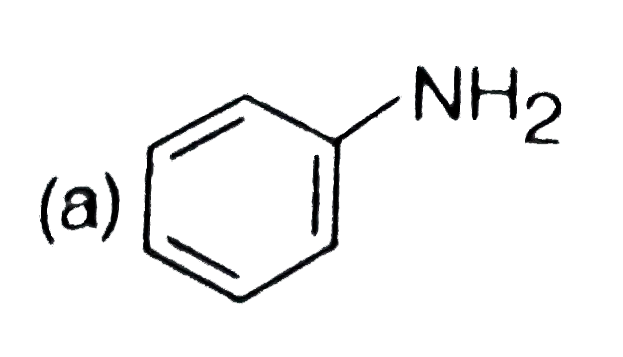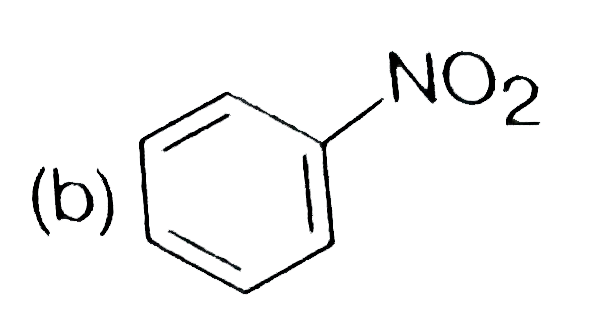In the equation, identify D. Draw the structures of A,B,C and D.
To solve the question, we need to identify the compound D in the reaction and draw the structures of A, B, C, and D.
1. Identify A, B, C, and D:
- A = HNO₂ (Nitrous acid)
- B = H₂SO₃ (Sulfurous acid)
- C = NH₂OH (Hydroxyamine)
- We need to identify D.
2. Understand the Reaction:
The reaction is given as:
\(
A + 2B + H₂O \rightarrow C + 2D
\)
Substituting the known compounds:
\(
HNO₂ + 2H₂SO₃ + H₂O \rightarrow NH₂OH + 2D
\)
Here, we need to find out what D is.
3. Determine D:
In the context of the reaction, D is likely to be a product formed from the reaction of sulfurous acid (H₂SO₃). Given the stoichiometry of the reaction, we can deduce that D is also H₂SO₃. Therefore, we conclude:
- D = H₂SO₃ (Sulfurous acid)
4. Draw the Structures:
- Structure of A (HNO₂):
- HNO₂ consists of a nitrogen atom bonded to one hydroxyl group (OH) and one double-bonded oxygen (O).
- Structure:
O∣∣N−O−H
- Structure of B (H₂SO₃):
- H₂SO₃ has a sulfur atom bonded to three oxygen atoms, two of which are hydroxyl groups (OH) and one is a double bond.
- Structure:
O∣|HO−S−OH|O
- Structure of C (NH₂OH):
- Hydroxyamine consists of a nitrogen atom bonded to two hydrogen atoms and one hydroxyl group (OH).
- Structure:
H|N−OH|H
- Structure of D (H₂SO₃):
- Since D is also sulfurous acid, its structure is the same as B:
O∣|HO−S−OH|O
Summary:
- A = HNO₂
- B = H₂SO₃
- C = NH₂OH
- D = H₂SO₃
- A = HNO₂ (Nitrous acid)
- B = H₂SO₃ (Sulfurous acid)
- C = NH₂OH (Hydroxyamine)
- We need to identify D.
The reaction is given as:
\(
A + 2B + H₂O \rightarrow C + 2D
\)
Substituting the known compounds:
\(
HNO₂ + 2H₂SO₃ + H₂O \rightarrow NH₂OH + 2D
\)
Here, we need to find out what D is.
In the context of the reaction, D is likely to be a product formed from the reaction of sulfurous acid (H₂SO₃). Given the stoichiometry of the reaction, we can deduce that D is also H₂SO₃. Therefore, we conclude:
- D = H₂SO₃ (Sulfurous acid)
- Structure of A (HNO₂):
- HNO₂ consists of a nitrogen atom bonded to one hydroxyl group (OH) and one double-bonded oxygen (O).
- Structure:
O∣∣N−O−H
- H₂SO₃ has a sulfur atom bonded to three oxygen atoms, two of which are hydroxyl groups (OH) and one is a double bond.
- Structure:
O∣|HO−S−OH|O
- Hydroxyamine consists of a nitrogen atom bonded to two hydrogen atoms and one hydroxyl group (OH).
- Structure:
H|N−OH|H
- Since D is also sulfurous acid, its structure is the same as B:
O∣|HO−S−OH|O
- A = HNO₂
- B = H₂SO₃
- C = NH₂OH
- D = H₂SO₃
Similar Questions
In the following equation :
A+2B+H2O→C+2D
A=HNO2,B=H2SO3,C=NH2OH
Identify D. Draw the structure of A,B,C and D.
View SolutionIn the given equation -S+2H2SO4→3SO2+2H2O: Identify the role played by conc . H2SO4 i.e.
A : Non volatile acid B : Oxidisting agent C : Dehydrating agent D : None of the above .
View SolutionWrite balanced equations for:
a.BF3+LiH→
b.B2H6+H2O→
c.NaH+B2H6→
d.H3BO3Δ−−→
e.Al+NaOH→
f.B2H6+NH3→
View SolutionConsider the following sequence of reactions:
B2O3+CaF2+H2SO4→(A)+(B)+H2O
(A)+LiAlH4→(C)(g)+(D)+LiF
View SolutionA given nitrogen-containing compound A reacts with Sn/HCl followed by HNO2 to give an unstable compund B.B on treatment with phenol forms a beautiful coloured compound C with the molecular formula C12H10N2O The structure of compound A is .
(a)
(b)
(c)
(d)
View SolutionIdentify (A), (B), (C ) and (D) and give their chemical formulate.
(A)+NaOHΔ−−→NaCI+NH3+H2O
NH3+CO2+H2O→(B)
(B)+NaCI→(C)+NH4CI
(C)Δ−−→Na2CO3+H2O+(D)
View SolutionComplete the following reaction equations :
(i) C6H5N2Cl+CH3COCl→
(ii) C2H5NH2+C6SO2Cl→
(iii) C2H5NH2+HNO2→
View SolutionThe products of the following chemical reactions are
(i)C2H5NH2+C6H5SO2Cl→
(ii) C2H5NH2+HNO2H2O−−→
View Solution(i) Identify A to F:
ALiAIH4−−−−→C2H5OHPBr3−−→BKCN−−→CD−−→C3H7NH2HNO2−−−→E[O]−−−−−−−−→K2Cr2O7/H+F
(ii) How can the following conversion be brought about : propanoic acid to ethylamine.
View SolutionNH3+O2Pt−−→ΔA+H2O
A+O2→B,
B+O2+H2O→C
A, B and C are:
View Solution
